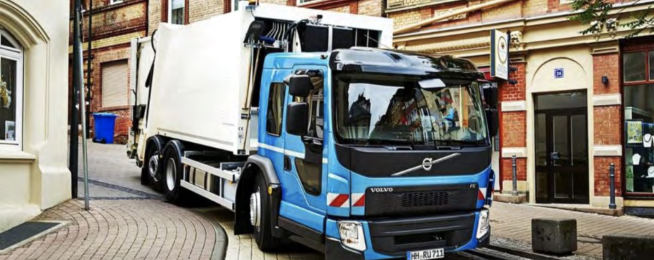Emergency vehicles like fire trucks are going on a diet so that streets can be made safer and more liveable for the people that inhabit them.
Many modern suburbs have been designed around the need to fit bloated fire trucks, garbage trucks and other emergency service vehicles down them, with the result they look like a road that could stage the Indianapolis 500 car race.
And often, when communities demand safer, traffic calmed streets, the response is: “We can't have narrow streets here because the fire engine wouldn’t fit.”
Such excuses may soon reach their use-by date.
Moves are afoot to fit fire engines to streets, and not then other way around.
The thrust has just been accelerated by new reports from the National Association of City Transportation Officials, an organization that represents 63 cities and 11 transit agencies in North America, together with the US Department of Transportation.
The report 'Optimizing Large Vehicles for Urban Environments' detail the effects of vehicle design on street safety, and the opportunities that public agencies – as significant purchasers of large vehicles – have to reduce traffic fatalities with improved vehicle design.
Large vehicles – including fire trucks, waste management vehicles, and freight trucks – count for a disproportionate and growing number of fatalities on U.S. streets.
Despite making up only 4% of the U.S. vehicle fleet, trucks account for 7% of all pedestrian, 11% of all bicyclist, and 12% of all car and light-truck fatalities. Over the past year, even as overall traffic fatalities slightly declined, fatalities involving large trucks increased 9%.
The report says may European cities already use smaller equipment in selected congested or constrained areas, enabling cities to redesign streets in those areas using best street design practices for safe speeds and improved pedestrian and cyclist visibility.
Researchers concentrated on the opportunities available to cities from new procurement strategies for large vehicles and found that:
- Accommodating the largest vehicles on the street – often emergency response vehicles or municipal refuse vehicles – prevents cities from redesigning streets for safer speeds and reduced crossing distances. Even as street designs with narrower lanes, smaller turning radii, and decreased crossing distances are shown to increase street safety, larger vehicles requires wider lanes, larger turning radii, and significant space to maneuver and park, preventing street designers from making street improvements that improve safety for everyone.
- Smaller, more maneuverable emergency response trucks often have similar, or better, capabilities than the most common trucks on U.S. streets today. Aerial ladder fire trucks used in major European and Asian cities can reach just as high, despite being only two-thirds as long and having only half of the turn radius as common American models. Some models of pumper fire trucks are up to 30% smaller, and have a turn radius up to 50% less than more typically procured models.
- Trucks with improved direct vision can markedly decrease operator reaction time: up to 50% faster than through indirect vision (mirrors, backup cameras, etc.), with minimal additional cost. When tested in a simulation, more than half of distracted drivers in traditional cabs struck a pedestrian, while only 12% of high-vision cab drivers did. High-vision truck cabs cost 0-5% more than conventional cabs—costs that may be recouped over time with decreased insurance and crash liability claims.
See the two reports:
Optimizing Large Vehicles for Urban Environments - Downsizing
Optimizing Large Vehicles for Urban Environments - Advanced Driver Assistance Systems
Become our friend
Find out more about Bicycle Network and support us in making it easier for people to ride bikes.


